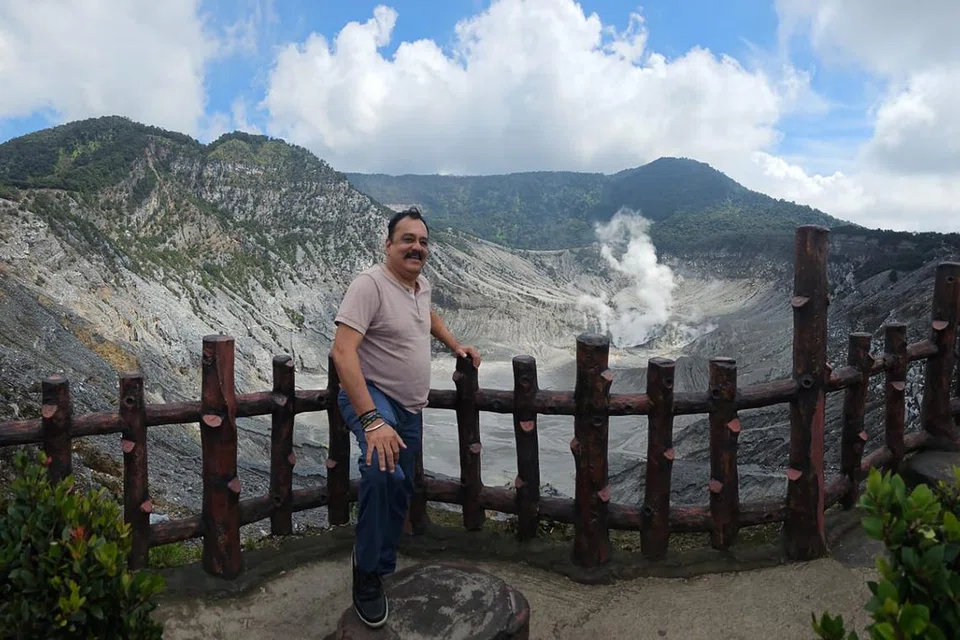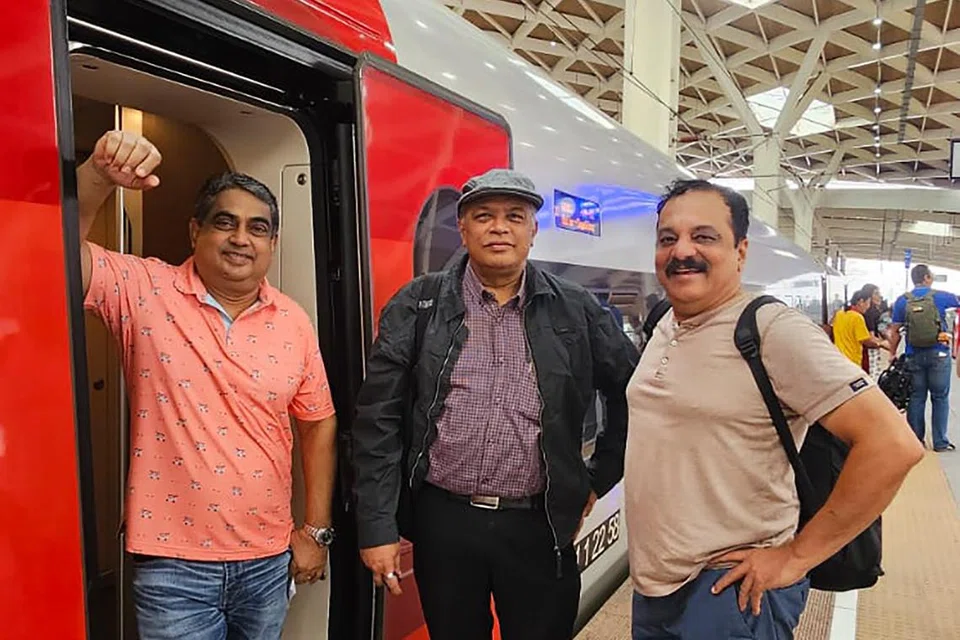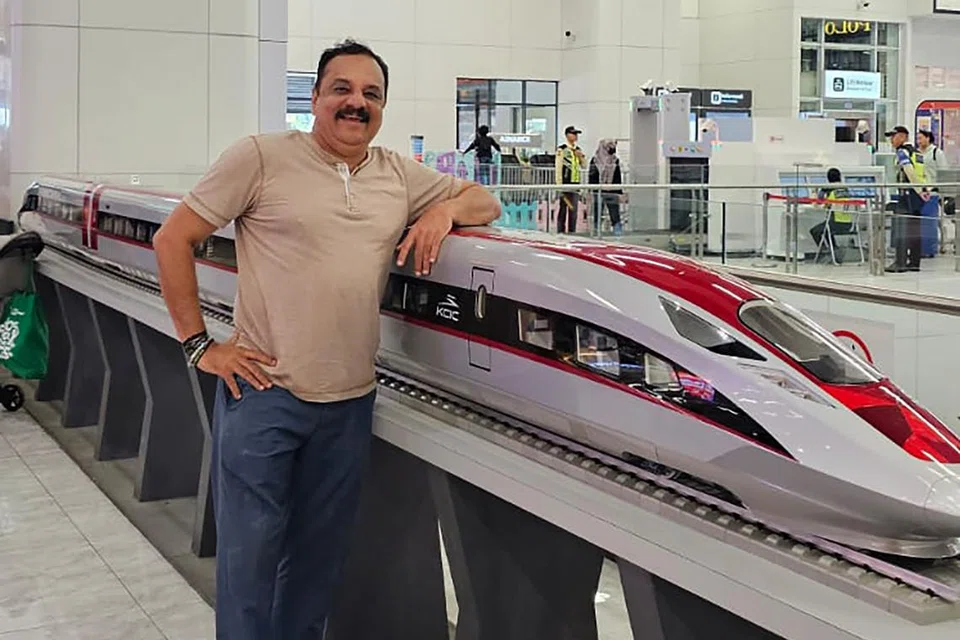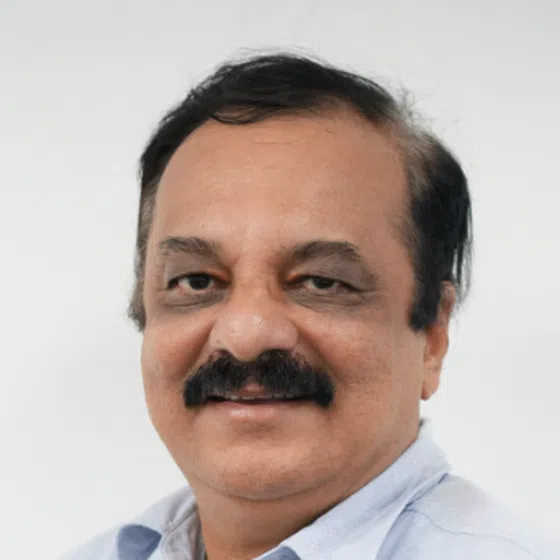I had always known Bandung, Indonesia, as the city that hosted the historic 1955 Bandung Conference, where 29 newly independent nations from Asia and Africa gathered to chart a post-colonial path forward.
But in June, it wasn’t history that drew me there – it was speed. Specifically, South-east Asia’s first high-speed train: the Whoosh, connecting the 153km from Jakarta to Bandung in under 30 minutes.
On the night of June 26, I boarded a Singapore Airlines flight to Jakarta. The next morning, I was joined by friends Vishnu Kumar and Gopalakrishnan Iyer as we made our way to Halim station in Jakarta to experience the Whoosh.
Halim was clean, efficient, and even featured a photo-friendly replica of the train. Our economy tickets cost 260,000 rupiah ($20.40) each one way, and we set off at 9am sharp.
The train was a marvel – sleek, efficient, and smooth. With only eight carriages, it had a streamlined bullet shape and spacious interiors.
As we departed, I watched the scrolling screen climb steadily – 150kmh, 200, 300, until we hit 349kmh, just shy of the top speed of 350kmh. In just 29 minutes, we were in Padalarang, the station closest to Bandung.
It was an incredibly smooth ride with no shakes or jerks, a testament to the Chinese engineering behind it.
But, while we arrived swiftly, our bags – sent by road from Jakarta – took more than five hours to reach our hotel, the Crowne Plaza Bandung.
Traffic was crawling due to the long weekend coinciding with the Islamic New Year on June 27. Clearly, the Whoosh had set a new standard for travel.
Bandung’s cooler highland climate welcomed us immediately. At 768 metres above sea level, it was refreshing – especially in June, the start of the dry season. Known as the Paris of Java, Bandung offered not just good weather, but cultural richness, natural beauty and architectural charm.
Our first excursion was to Tangkuban Perahu, a famous volcano about 25km away. The name translates to “upturned boat” in Sundanese, and legend has it the mountain’s shape was formed by a mythical son unknowingly falling in love with his mother.

Standing at the crater, surrounded by sulphur-scented steam and rocky terrain, I saw a smoking volcano up close for the first time.
We skipped the hiking trails and instead enjoyed Bandrek, a traditional Sundanese spiced drink made with ginger, palm sugar, and cinnamon – perfect for the chilly mountain air. I bought a few packets to take home.
Around the crater, bead sellers doubled up as photographers, eager to take your picture – though they also insisted you buy their jewellery. With a little bargaining, I gave in.
Bandung’s cultural soul lies in its Sundanese roots. The Sundanese people are known for their friendliness, spirituality, and deep connection with nature. The Sundanese language is still widely spoken here, and their food culture – dominated by fresh herbs, vegetables, and spicy peanut sauces – is vibrant.
During my stay, I sampled Bolu Susu Lembang, a fluffy milk sponge cake made with fresh local milk. It’s a popular souvenir, and I made sure to take home a few boxes.
Driving around Bandung, the fourth-largest city in Indonesia and now famous as a technology centre and manufacturer of textile and leather goods for high-end fashion houses around the world, is not always easy. The traffic was intense, but it gave me a chance to admire the city’s Dutch colonial architecture, particularly along Jalan Braga.
The art deco buildings, including the historic Savoy Homann Hotel, spoke to the city’s past as a fashionable colonial retreat.
Bandung is also a shopper’s haven. My favourite stop? Rumah Mode, a factory outlet mall on Jalan Dr Setiabudi.
The ambiance was Balinese, with greenery, fountains and cafes, making the shopping experience relaxing. I found jeans that typically retail for $70 for just $20 and picked up shirts and T-shirts at $7 to $15 each. A bargain hunter’s paradise!
We wrapped up our shopping with a meal at Spice Affair, an Indian fusion restaurant on Jalan Sukajadi. The food was decent – nothing extraordinary – but a good change after days of Sundanese flavours. Prices were slightly on the higher side, but the ambience made up for it.
While I had planned to visit some farms and Buddhist viharas, traffic made it tough. Still, the cultural immersion, shopping, nature and smooth train journey more than made up for it.
On July 29, we boarded the Whoosh back to Jakarta. The next morning, I was on a flight to Singapore, already reminiscing about volcanic craters, spiced drinks and fast trains.
Bandung surprised me – not just with its speed, but with its soul. It’s a city that beautifully blends the past with the future.



